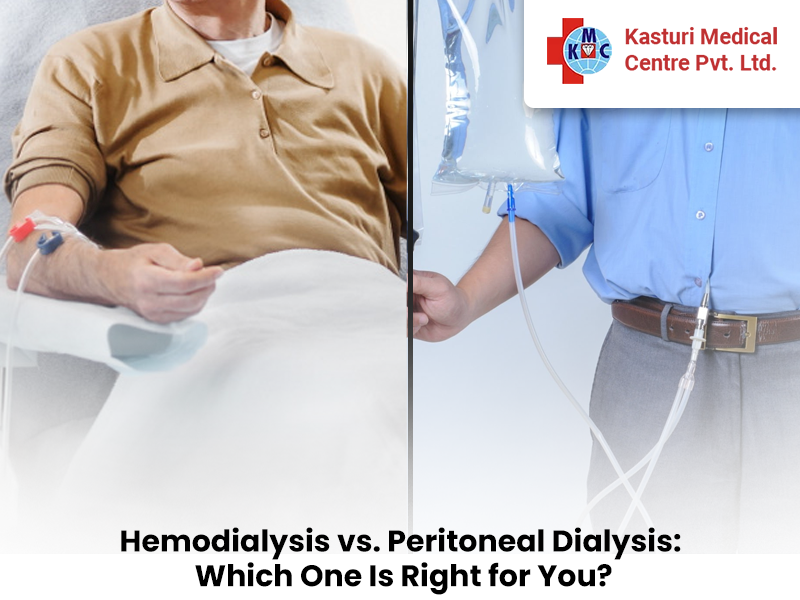Dialysis is a vital treatment for people whose kidneys are no longer able to function properly. When the kidneys fail to remove waste and excess fluids from the blood, dialysis steps in to perform this life-saving process. There are two primary types of dialysis: Hemodialysis and Peritoneal Dialysis. Both methods are effective but differ in their approach and how they fit into your lifestyle. Understanding these differences can help you make an informed decision about which treatment is right for you.
What is Hemodialysis?
Hemodialysis is a procedure where a machine called a dialyzer filters your blood to remove waste products, toxins, and excess fluids. This process mimics the natural function of the kidneys. During the treatment, blood is drawn from your body, filtered through the machine, and then returned to your bloodstream.
Typically, hemodialysis is performed at a dialysis centre under medical supervision. Patients usually undergo this treatment three times a week, with each session lasting about 3-5 hours. The process is highly effective at maintaining chemical balance and removing waste from the body.
What is Peritoneal Dialysis?
Peritoneal dialysis is an alternative method where the blood is cleaned inside your body using the lining of your abdomen (peritoneum). A special fluid called dialysate is introduced into the abdominal cavity through a catheter. This fluid absorbs waste and excess fluids before being drained out and replaced with fresh dialysate.
Unlike hemodialysis, peritoneal dialysis does not require a machine and can often be performed at home. Patients typically undergo several exchanges throughout the day (Continuous Ambulatory Peritoneal Dialysis – CAPD) or use an automated machine at night (Automated Peritoneal Dialysis – APD).
Hemodialysis vs. Peritoneal Dialysis: Key Differences
While both treatments achieve the same goal, they differ in their procedure, convenience, and lifestyle impact:
- Location of Treatment: Hemodialysis is usually performed in a clinic or hospital, while peritoneal dialysis can be done at home.
- Frequency: Hemodialysis is required 3 times a week for several hours. Peritoneal dialysis is more continuous, either throughout the day or overnight.
- Invasiveness: Hemodialysis involves accessing your blood through a fistula or catheter. Peritoneal dialysis involves placing a permanent catheter in your abdomen.
- Lifestyle Flexibility: Peritoneal dialysis allows greater freedom and independence, while hemodialysis requires regular clinic visits and more structured scheduling.
Which Dialysis Treatment is Right for You?
Choosing between hemodialysis and peritoneal dialysis depends on several factors, including your medical condition, lifestyle preferences, and personal comfort. Hemodialysis may be better suited for patients who prefer the security of regular medical supervision, while peritoneal dialysis offers greater flexibility for those who want to manage treatment at home.
Your nephrologist will evaluate your overall health, kidney function, and daily routine to recommend the best approach for you. Regardless of which method you choose, consistent treatment is essential to maintaining your well-being.
If you’re facing kidney-related issues, seeking expert medical care is crucial. At Kasturi Medical Centre, a trusted dialysis centre in Behala, our team of experienced doctors and medical staff offer comprehensive dialysis solutions tailored to your needs. We provide advanced hemodialysis and peritoneal dialysis services, ensuring patient comfort, safety, and the highest standards of care. Take the first step towards better kidney health—schedule a consultation today !

